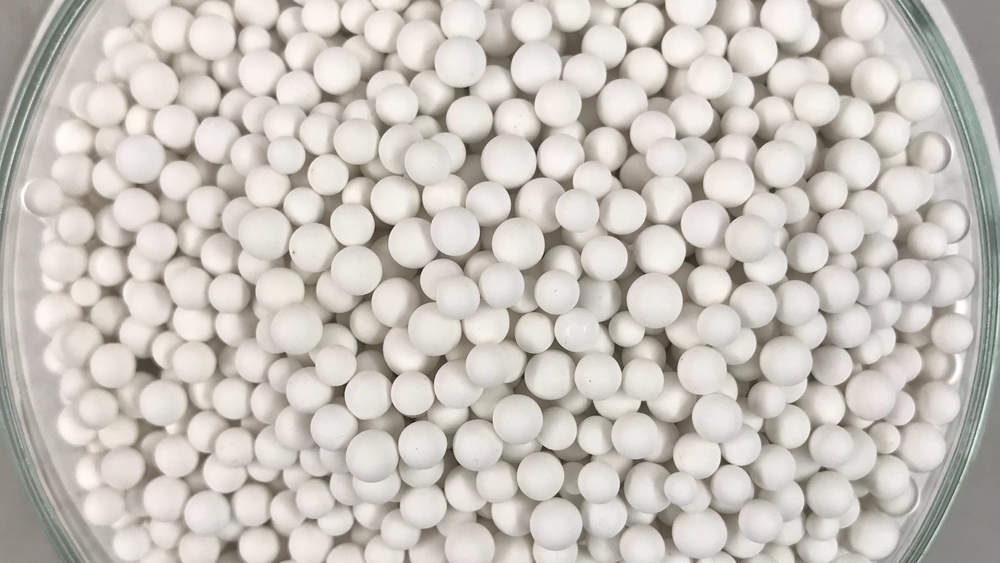|
Alumina (Al2O3) is one of the most widely specified, general-purpose technical ceramics. All aluminas are very hard and wear resistant, with high compressive strength even against extreme temperatures and corrosive environments. Aluminas are also excellent electrical insulators and are gas tight.

ImageCredit: Shutterstock/Kanungnit
Alumina Production
Alumina is produced by firing a tightly packed powder form of Al2O3 which includes some binder material. Commercially available grades range from 90% up to 99.95% with the higher purity generating somewhat higher hardness. It is possible to machine alumina using diamond grinding techniques. Polishing is also possible, with the degree attainable affected by alumina grain size and production technique, whether pressed or extruded.
Alumina Grades
90%-97% Alumina - Best suited for metalizing (metal deposition which allows brazing) because of large grain structure.
98%-99.95% Alumina - Common range for isostatically pressed grades, with extruded shapes also available at low cost.
Tolerances
As-fired tolerances of alumina are generally only possible within a few percent of dimension. Extremely tight tolerances are attainable, but only by precision machining the fired part using diamond grinding techniques. This adds considerable cost, but tolerances to millionths of an inch are possible, and are often cost effective due to the extraordinary stability and durability of the finished piece.
Alumina Blends
Additional options include blends of zirconia with alumina and silicon nitride with alumina. The result is a performance combination that is tougher than alumina alone, but with improved hardness, strength and thermal properties compared to these other materials, especially at elevated temperature.
Mechanical Properties
Table 1. Mechanical properties of alumina.
|
|
|
Density
|
3.88
|
gm/cc
|
|
Hardness
|
82
|
Rockwell 45N
|
|
Tensile Strength
|
54
|
Kpsi
|
|
Modulus of Elasticity
|
46
|
psi x 106
|
|
Flexural Strength
|
51
|
kpsi
|
|
Poisson’s Ratio
|
0.23
|
-
|
|
Compressive Strength
|
368
|
kpsi
|
|
Fracture Toughness
|
4.3
|
MPa m1/2
|
Electrical Properties
Table 2. Electrical properties of alumina.
|
|
|
Dielectric Strength
|
210
|
Ac volts/mil
|
|
Dielectric Constant
|
9.7
|
(at 1MHz)
|
|
Volume Resistivity
|
>1014
|
ohm-cm2/cm
|
Thermal Properties
Table 3. Thermal properties of alumina.
|
|
|
Coefficient of Thermal Expansion
|
7.2
|
X10-6/°C
|
|
Thermal Conductivity
|
30.3
|
W/m°K
|
|
Specific Heat
|
0.2
|
cal/g°C
|
|
Max Working Temp
|
1750
|
°C
|
|
Shock Resistance
|
200
|
°C diff
|
All properties are at room temperature unless otherwise noted.
Engineering data are representative, and are not intended as absolute nor warrantable. Manufacturer’s Data shown is blended from multiple sources and therefore illustrates the marketplace.
|
|
|
.jpg)
This information has been sourced, reviewed and adapted from materials provided by INSACO Inc.
For more information on this source, please visit INSACO Inc.